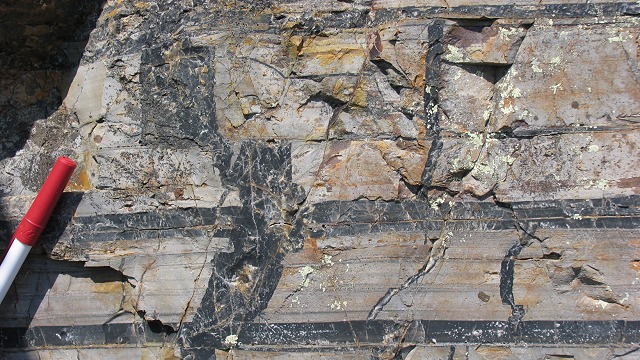
Stanford geology professor Donald Lowe has been haunting the ancient hills of South Africa for a long time. In the 1980s, he first found evidence in the Barberton greenstone belt—located east of Johannesburg—of enormous events that occurred there more than 3 billion years ago during the Archean Eon.
There were networks of large cracks in solid rocks that had sucked the overlying sediment (now turned to chert) down into them. There were signs of great tsunamis that had torn up the seafloor and strewn its pieces far and wide. Most telling were layers of sand-size droplets of formerly molten rock—spherules—with the chemistry of extraterrestrial material.
Lowe put the evidence together into a story of asteroid collisions, like the one that killed off most of the dinosaurs 65 million years ago in the Cretaceous Period, only much bigger. Whereas the Cretaceous impactor was about 10 kilometers across, the Archean one was more like 45 km.
Lowe has documented his findings in a series of major papers. In his latest one, just published in the journal Geochemistry, Geophysics, Geosystems, he teamed up with Stanford physicist Norm Sleep to attack the problem from the other direction. Instead of using field evidence to infer the asteroid collision, they applied the raw physics of great impacts on solid bodies to predict what the actual geology might look like after that asteroid collision.
After 50 years of interplanetary research, we’re pretty sure of what giant impacts do around the solar system. It’s just a matter of finding the right equations, feeding them the right numbers and cranking out the astounding answers. Norm Sleep is good at that kind of thing, being a major contributor to a wide variety of early-Earth studies. Their paper is the first to go from the cosmic scale of model impacts all the way down to the sediment-sucking cracks and spherule beds of the Barberton greenstone belt in plausible detail—a visualization of the unimaginable.

